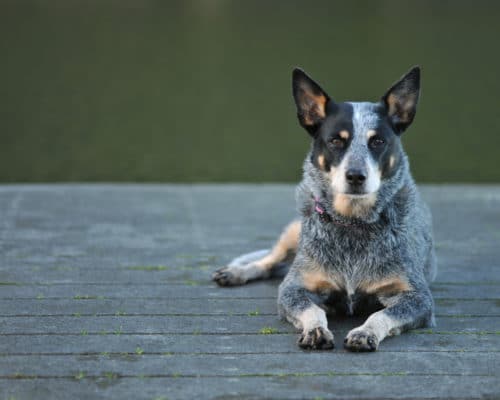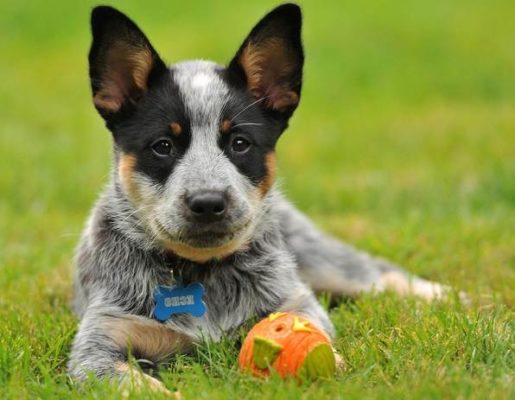Australian Cattle Dog
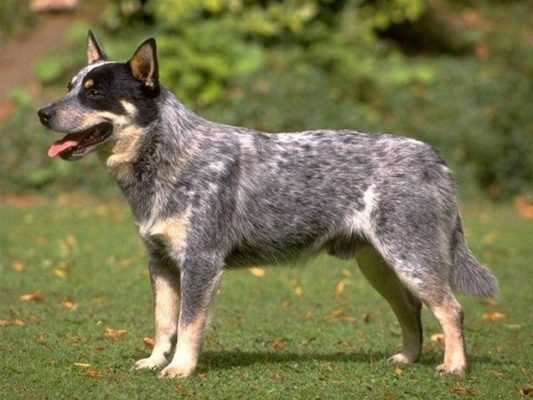
The Australian Cattle Dog is always active and alert. They are brilliant and responsive, and over time learn to read their owner’s mind. They become loyal to one person, preferring to study his every move. Dogs do become loyal and protective of their entire family but always choose a favorite and leader.
Table of Contents
Breed Information
| Another Name | ACD, Cattle Dog, Blue Heeler, Red Heeler, Queensland Heeler |
| Origin | Australia |
| Height | Males 46-51 cm Females 43-48 cm |
| Weight | Males 15-16 kg Females 14-16 kg |
| Fur | Straight, medium length, with a thick undercoat |
| Color | Blue, blue with black or brown spots |
| Lifespan | 13-15 years |
| FCI Classification | Sheepdogs and Cattledogs (except Swiss Cattledogs) |
| Group | Dogs for children, dogs for protection |
| Price | From $500 |
Breed Photos
Origin History
The first mentions of the Australian Cattle Dog were recorded at the beginning of the 19th century. They are associated with the arrival of English cattlemen to Australia. Farmers in the new colonies discovered that the dogs brought from England were not suitable. They were adapted neither to the harsh Australian climate nor to the wildlife of cattle. At the same time, there was the loss of large numbers of cattle when they were transported to market. It happened because of the lack of control by herding dogs.
In the mid-1800s, some farmers experimented by crossbreeding a blue merle dog with a native dingo and were pleasantly surprised. The offspring turned out to be intelligent and capable of learning while at the same time being naturally tenacious and aggressive, which was necessary to combat the wild behavior of beef cattle at the time. These dogs became known as “hilers.”
The breed standard, which was mainly based on the dingo form, was first published in 1903. It was not until 1980 that the American Kennel Club officially recognized the Australian dog in the British Kennel Club.
Appearance
The breed is sturdily built with no frills or flaws. Able to develop speed. Some dogs tend to be stocky in the front limbs.
The head is relatively broad and robust. The ears are upright, muscular, and mobile, continually scanning the environment. The mouth is healthy with “dense” lips and large teeth in a neat bite.
The neck is very muscular and thick. The breed has a convex chest, reflecting a large lung capacity, and the back is broad and firm. All four limbs should be straight and correct in movement, with good bone and strongly curved toes.
The Australian Cattle Dog’s coat is quite striking – short, dense, and coarse, with a thick undercoat. The color is predominantly blue or red. Black, blue, and brown markings on the face and limbs are allowed by the breed standards, but dark marks on the torso are not welcome.
In terms of size, male heelers range from 46 to 51 cm and weigh from 18 to 22 kg, while females are 43-48 cm tall and weigh 15-20 kg.
Character
The Australian Cattle Dog is always active and alert. They are brilliant and responsive, and over time learn to read their owner’s mind. They become loyal to one person, preferring to study his every move. Dogs do become loyal and protective of their entire family but always choose a favorite and leader.
This breed is suitable for older children. Rude handling or unpredictable behavior by a younger child can cause a portion of resentment. They make excellent guard dogs who vigorously defend their territory from intruders. Dogs of this breed tend to be suspicious of strangers. Because of their high energy level and unusual behavioral characteristics, only experienced dog owners are recommended.
Care
A heeler’s coat requires very little work. It can easily be brushed with a brush from time to time. Bathing is rarely required. The breed sheds all year round.
Good oral hygiene is just as important for dogs as it is for people. It is advisable to accustom your pet to daily brushing. Similarly, careful use of clippers to trim the ends of long claws at 2 to 3 months of age should make this chore less stressful for the adult dog.
Training
The Australian Cattle Dog can learn new commands quickly and the ability to respond to verbal instructions. Obedience training is not difficult, but it is challenging to maintain interest. This breed soon tires of learning simple commands. But it excels in agility and obedience competitions.
Many dog dogs that are dog-raised act up without enough exercise. This behavior is much less likely to be seen in a well-trained dog. For the Australian dog, the worst punishment is to separate it from its owner. And puppies that bite their owner’s hands or feet should be ignored until the behavior stops.
Common Diseases
The Australian Cattle Dog is generally healthy, but like all breed dogs, it has specific problems. In particular, diseases of the sensory organs, nervous system:
- cataract;
- deafness;
- epilepsy;
- hypothyroidism;
- inguinal and umbilical hernia;
- neuronal ceroid lipofuscinosis;
- portosystemic shunt;
- resistant pupillary membrane;
- retinal atrophy;
- gegeneration of retinal tissue, leading to loss of vision.
Nutrition
The Australian Cattle Dog is very athletic and requires a balanced diet to maintain energy levels. High-quality dog food is a must at all stages of life, from puppy to old age.
 Border Collie
Border Collie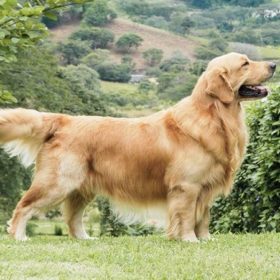 Golden Retriever
Golden Retriever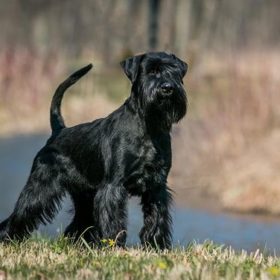 Standard Schnauzer
Standard Schnauzer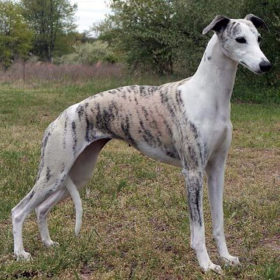 Whippet
Whippet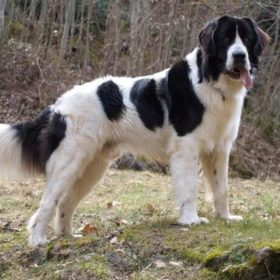 Landseer
Landseer Petit Basset Griffon Vendéen
Petit Basset Griffon Vendéen